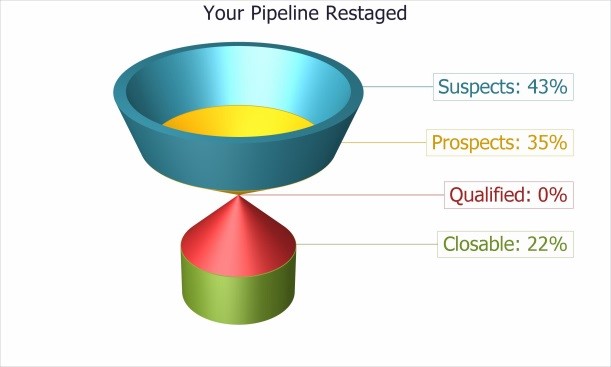In Part 1 of "Negotiating on the First Tee, we discussed the practice of negotiating with your prospect before you begin your presentation. In Part 2, we continue this discussion and add more to the conversation.
In order to increase sales and close more deals, you must understand the client's business strategy, build a strong foundation for negotiation, and cross off all the boxes for a killer Sales DNA.

- Establishing the ground rules for time of presentation are critical. Before we get to that though, you must have a transitional discussion
- "Let me take a minute to review where I think we are..."
- "You have the following issues a,b, and c that if not taken care of within this time frame will cause the following to happen and this outcome is a have to fix problem"
- "Your capacity to invest time, money and effort to fix the problem is this…"
- "And I’m assuming for a minute that if we are able to fix this for you, in the budget you’ve identified with the right criteria and priorities, you would also want me to be in a position to answer any and all questions at that time"
- "Did I get this right?" (Buyer says yes)
- "Good, assuming we can do this I will be prepared to do all those things. If I can’t, I will call in advance and cancel our presentation meeting. Fair?" (Fair)
- Ground rules discussion:
- "It may not be effective here, but there is a process that we recommend to make sure we are all on the same page, can I share that with you?" (Yes)
- I need for you to be prepared as well:
- "As I am going through my presentation, you will be thinking one of 2 things: 1) this makes all the sense in the world; let’s do this, 2) This won’t work for me, the money is wrong or I don’t think there is a fit"
- "When I’m finished, I’m going ask you which one you are thinking. What objections do you have to that process?"
- Anticipate and prepare for objections when you complete step six. Keep in mind that an objection, stall or questions does NOT mean they are telling you no. They just need more information or you need to find out more clarity about compelling issues, capacity to invest or clarity on decision making. At the end, you do your best to eliminate any TIOs (Think It Overs)
- Let's assume for a minute that this works for you. You are not done minimizing the opportunity for negotiation at time of presentation. When you finish this discussion, you must return to your office and write out and send the "As we agreed to letter" that covers the 3 “Cs” and inform the buyer you will call to confirm the information you’ve sent. Then call to confirm.
- Presenting to get a decision is as much of a mindset as it is a process:
- Review what you’ve discussed
- Review the as we agreed to letter including money and decision process that will take place today
- Ask, “What’s changed?”
- Make the presentation starting with their priority item not the first page in your presentation
- Answer all of their questions about each solution, get them to score that solution on a scale of 1-10. If you are 7 or better you are in good shape but still you need to get them to a ten. Once you get the ‘10’ you check that item off.
- Ask our closing question:
- "What where you thinking as I went through this. Assume for this discussion they said, This is really great we should do this!
- You ask, what should we do now?
- Or your alternative is:
- Do you believe based on what we presented that we understand your business and what you are trying to accomplish?
- Do you feel we can help?
- Do you want our help?
- Despite this great process and effort, you can expect buyers to ask you questions that they haven’t asked yet, raise objections, or present you with stalls. The first thing is this: Be prepared by conducting pre-call strategy meetings and role play these challenges. Always understand that prospects are looking out for their best interests and not yours. Do not get emotionally involved when they throw you the curve ball!
Now I bet you are thinking, Tony, where is all the negotiation stuff? Well that’s it right there. You win the bet on the first tee.


 Figure 1
Figure 1

